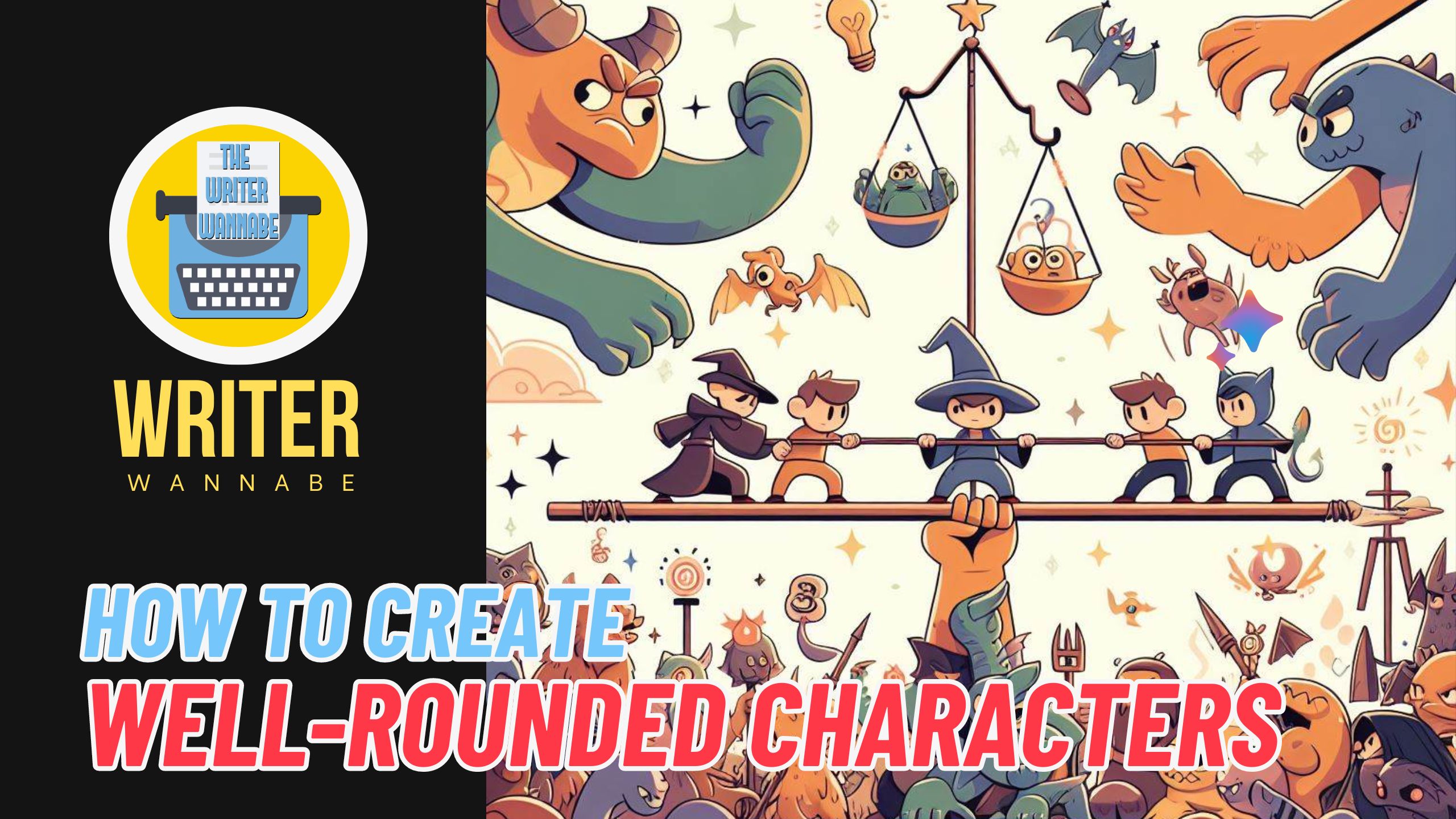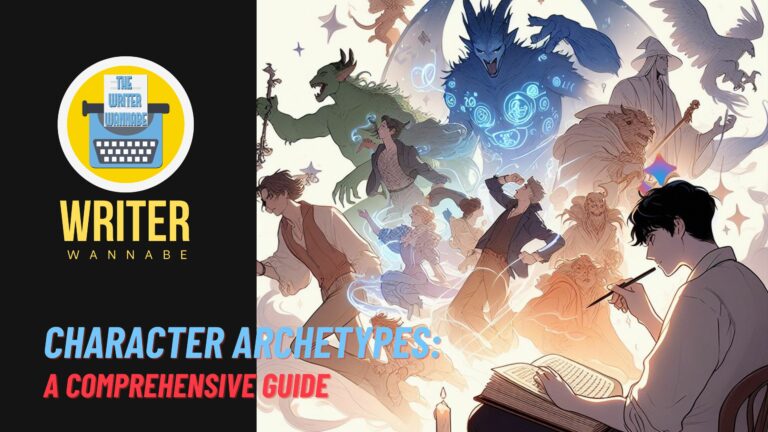How to Create Well-Rounded Characters
Introduction How to Create Well-Rounded Characters
Well-rounded characters are essential in fiction writing as they bring depth and complexity to a story. They have multidimensional personalities, motivations, and relationships that make them relatable and engaging to readers. Developing such characters can elevate a story from being ordinary to extraordinary, capturing the attention and imagination of readers.
Key Takeaways
- Well-rounded characters are essential for engaging and believable fiction writing.
- Developing a character’s personality traits and backstory is crucial for creating depth and complexity.
- Crafting believable motivations for your characters helps readers understand their actions and decisions.
- Balancing strengths and weaknesses in character development creates realistic and relatable characters.
- Testing your characters through conflict and adversity is necessary for character growth and development.

Understanding the Importance of Well-Rounded Characters in Fiction Writing
Well-rounded characters are crucial in fiction writing because they make a story more relatable and engaging. When readers can connect with the characters on an emotional level, they become invested in their journey and are more likely to continue reading. Flat or one-dimensional characters, on the other hand, can detract from a story as they lack depth and fail to evoke any emotional response from the readers.
Developing a Character’s Personality Traits and Backstory
Creating a backstory for your characters is essential as it helps shape their personality traits and actions. A character’s past experiences, upbringing, and environment all contribute to who they are in the present. By understanding their backstory, you can develop their personality traits in a way that is consistent and believable.
Personality traits play a significant role in shaping a character’s actions and decisions throughout the story. For example, a character who is naturally impulsive may act without thinking, leading to unforeseen consequences. On the other hand, a character who is cautious and analytical may take longer to make decisions but may also avoid unnecessary risks.
Creating Complex and Multidimensional Characters
Adding layers to a character can make them more interesting and captivating for readers. A complex character has both positive and negative traits, making them more relatable and realistic. They may have internal conflicts or struggle with moral dilemmas, which adds depth to their character.
Creating complex characters without making them confusing or unrealistic requires careful planning and development. It is important to strike a balance between their strengths and weaknesses, ensuring that they are not too perfect or too flawed. By giving them a range of emotions and motivations, you can create a character that feels authentic and human.

Crafting Believable Motivations for Your Characters
A character’s motivations are what drive the plot forward and shape their actions and decisions. It is important to create believable motivations that are consistent with a character’s personality and backstory. For example, a character who has experienced loss may be motivated by a desire for revenge or justice.
To craft believable motivations, it is important to understand your character’s desires, fears, and values. What do they want? What are they willing to do to achieve their goals? By answering these questions, you can create motivations that feel authentic and drive the story forward.

Balancing Strengths and Weaknesses in Character Development
Creating characters with both strengths and weaknesses is crucial for developing well-rounded characters. Characters who are too perfect or too flawed can be unrelatable and unrealistic. By balancing their strengths and weaknesses, you create characters that feel more human and relatable.
For example, a character may be intelligent and resourceful but struggle with self-doubt or fear of failure. This combination of strengths and weaknesses adds depth to their character and makes them more relatable to readers.
Building Relationships and Interactions between Characters
The relationships between characters add depth to a story as they reveal different aspects of their personalities. By exploring the dynamics between characters, you can create more complex and multidimensional characters.
Realistic interactions between characters are essential for creating believable relationships. Each character should have their own unique voice and way of interacting with others. By paying attention to the nuances of their interactions, you can create more authentic relationships that resonate with readers.

Incorporating Character Arcs and Growth into Your Story
Character arcs add depth to a story as they show the growth and development of a character over time. A well-crafted character arc allows readers to see how the character’s experiences and choices shape them and their journey.
To create a character arc that is consistent with a character’s personality and motivations, it is important to understand their goals and desires. What do they want to achieve? What obstacles do they need to overcome? By answering these questions, you can create a character arc that feels authentic and satisfying for readers.
Using Dialogue to Reveal Character Traits and Emotions
Dialogue is a powerful tool for revealing a character’s personality traits and emotions. The way a character speaks, the words they choose, and the tone they use can all provide insights into their thoughts and feelings.
To write dialogue that is consistent with a character’s personality and motivations, it is important to understand their voice and speech patterns. Do they speak formally or informally? Are they direct or indirect in their communication? By paying attention to these details, you can create dialogue that feels authentic and true to the character.
Avoiding Stereotypes and Clichés in Character Development
Avoiding stereotypes and clichés is crucial for creating unique and interesting characters. Stereotypes rely on tired tropes and can make characters feel one-dimensional and predictable. By breaking away from these stereotypes, you can create characters that are fresh and unexpected.
To avoid stereotypes, it is important to challenge assumptions and think outside the box. Consider how you can subvert expectations or introduce unique characteristics that make your characters stand out. By doing so, you can create characters that are memorable and captivating for readers.
Testing Your Characters through Conflict and Adversity
Conflict and adversity reveal a character’s true nature as they are forced to confront challenges and make difficult choices. By testing your characters through conflict, you can push them out of their comfort zones and reveal new aspects of their personality.
To create conflict that is consistent with a character’s personality and motivations, it is important to understand their fears and weaknesses. What challenges would they find most difficult to overcome? By putting your characters in situations that challenge them, you can create tension and suspense that keeps readers engaged.
Well-rounded characters are essential in fiction writing as they bring depth and complexity to a story. By developing complex and multidimensional characters, you can create a story that is relatable and engaging for readers. By crafting believable motivations, balancing strengths and weaknesses, and creating realistic relationships and interactions, you can create characters that feel authentic and true to life. So, use these tips to create more captivating characters in your own writing and watch your stories come to life.
If you’re looking to create well-rounded characters in your writing, you may also be interested in understanding point of view in fiction writing. This article from Writer Wannabe provides valuable insights into the different perspectives you can use to tell your story and how they can impact your characters’ development. Check it out here for a comprehensive guide on mastering point of view in your writing.
Also you can check our blog for more interesting articles on story writing.
Frequently Asked Questions(FAQ) How to Create Well-Rounded Characters
What is the importance of creating well-rounded characters?
Creating well-rounded characters is important because it makes them more relatable and believable to readers. It also adds depth and complexity to the story, making it more engaging and interesting.
What are some characteristics of a well-rounded character?
A well-rounded character has a unique personality, strengths and weaknesses, motivations, and a backstory that informs their actions and decisions. They also have flaws and make mistakes, which makes them more human and relatable.
How can I create a well-rounded character?
To create a well-rounded character, start by giving them a backstory and motivations that inform their actions and decisions. Develop their personality by giving them unique traits, strengths, and weaknesses. Consider their relationships with other characters and how they interact with the world around them.
What are some common mistakes to avoid when creating characters?
Common mistakes to avoid when creating characters include making them one-dimensional or stereotypical, giving them unrealistic abilities or traits, and not giving them a clear motivation or backstory. It’s also important to avoid making them too perfect or flawless, as this can make them less relatable and interesting.
How can I make my characters more relatable to readers?
To make your characters more relatable, give them flaws and weaknesses that readers can identify with. Show their vulnerabilities and struggles, and make them face challenges that readers can empathize with. You can also make them more relatable by giving them relatable goals and motivations, and by showing how they grow and change over the course of the story.








